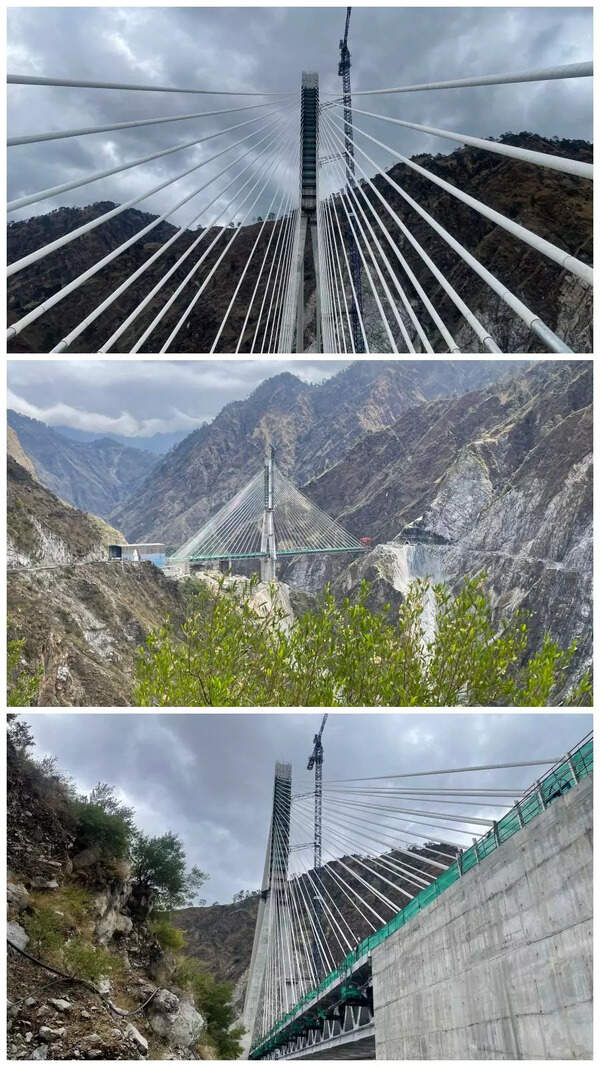- News
- India News
- IMD forecast today will make monsoon situation clearer
Trending Topics
IMD forecast today will make monsoon situation clearer

NEW DELHI: Ahead of India’s official monsoon forecast by the IMD, private forecaster Skymet on Monday predicted that this year’s monsoon rainfall was likely to be “below normal” at 94% (with an error margin of +/-5%) of the long-period average (LPA) of nearly 87 cm rainfall for the four-month season, giving a 40% probability of this outcome.
The forecaster also expects Gujarat, Madhya Pradesh and Maharashtra to witness inadequate rains during the core monsoon months of July and August.

Though the situation will be clearer when the country’s national weather forecaster, India Meteorological Department (IMD), comes out with its monsoon forecast on Tuesday, the “below normal” rainfall possibility may not impact the country’s overall farm output as reflected in 2017 and 2018 — the two consecutive years of “below normal” rainfall.
Agriculture ministry farm production data shows that the country, despite reporting “below normal” rainfall in 2017 and 2018, had produced 285 million tonnes of foodgrains during2017-18 and 2018-19 each, which was higher than the output in 2016-17 (275 million tonnes) — the year of normal monsoon rainfall at 97% of the LPA.
Of course, farm output will be adversely affected if the monsoon slips to a deficient condition which has, however, only a 20% probability as per Skymet’s forecast. India had from 2019 to 2022 reported four consecutive years of normal or above normal rainfall.
Attributing the possibility of weaker monsoon to El Nino conditions, Skymet managing director Jatin Singh, said, “Key oceanic and atmospheric variables are consistent with ENSO neutral conditions. The likelihood of El Nino is increasing and its probability to become a dominant category during the monsoon is growing large. El Nino’s return may presage a weaker monsoon. ”
There are also other factors influencing the monsoon. It includes the Indian Ocean Dipole (IOD), which could steer the monsoon and negate the ill effects of El Nino, when sufficiently strong. “IOD is neutral now and is leaning to turn moderately positive at the start of monsoon. El Nino and IOD are likely to be ‘out of phase’ and may lead to extreme variability in the monthly rainfall distribution. The second half of the season is expected to be more aberrated,” Skymet said.
The forecaster also expects Gujarat, Madhya Pradesh and Maharashtra to witness inadequate rains during the core monsoon months of July and August.

Though the situation will be clearer when the country’s national weather forecaster, India Meteorological Department (IMD), comes out with its monsoon forecast on Tuesday, the “below normal” rainfall possibility may not impact the country’s overall farm output as reflected in 2017 and 2018 — the two consecutive years of “below normal” rainfall.
Agriculture ministry farm production data shows that the country, despite reporting “below normal” rainfall in 2017 and 2018, had produced 285 million tonnes of foodgrains during2017-18 and 2018-19 each, which was higher than the output in 2016-17 (275 million tonnes) — the year of normal monsoon rainfall at 97% of the LPA.
Of course, farm output will be adversely affected if the monsoon slips to a deficient condition which has, however, only a 20% probability as per Skymet’s forecast. India had from 2019 to 2022 reported four consecutive years of normal or above normal rainfall.
Attributing the possibility of weaker monsoon to El Nino conditions, Skymet managing director Jatin Singh, said, “Key oceanic and atmospheric variables are consistent with ENSO neutral conditions. The likelihood of El Nino is increasing and its probability to become a dominant category during the monsoon is growing large. El Nino’s return may presage a weaker monsoon. ”
There are also other factors influencing the monsoon. It includes the Indian Ocean Dipole (IOD), which could steer the monsoon and negate the ill effects of El Nino, when sufficiently strong. “IOD is neutral now and is leaning to turn moderately positive at the start of monsoon. El Nino and IOD are likely to be ‘out of phase’ and may lead to extreme variability in the monthly rainfall distribution. The second half of the season is expected to be more aberrated,” Skymet said.

About the Author
Vishwa MohanVishwa Mohan is Senior Editor at The Times of India. He writes on environment, climate change, agriculture, water resources and clean energy, tracking policy issues and climate diplomacy. He has been covering Parliament since 2003 to see how politics shaped up domestic policy and India’s position at global platform. Before switching over to explore sustainable development issues, Vishwa had covered internal security and investigative agencies for more than a decade.
Start a Conversation
FOLLOW US ON SOCIAL MEDIA
FacebookTwitterInstagramKOO APPYOUTUBE










